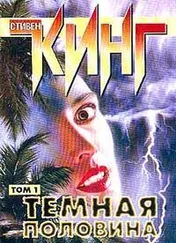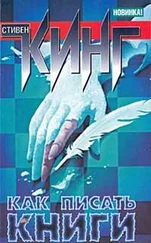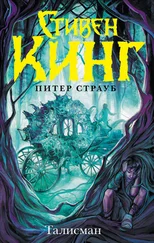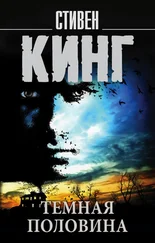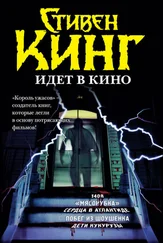My agent, Kirby McCauley, a fantasy/horror fan and unregenerate Minnesotan, also deserves thanks for reading this manuscript, pointing out errors of fact, arguing conclusions . . . and most of all for sitting up with me one fine drunk night in the U.N. Plaza Hotel in New York and helping me to make up the list of recommended horror films during the years 1950-1980 which forms Appendix 1 of this book. I owe Kirby for more than that, much more, but for now that will have to do.
I've also drawn upon a good many outside sources during the course of my work in Danse Macabre , and have tried as conscientiously as I can to acknowledge these on a pay-as-you-go basis, but I must mention a few that were invaluable: Carlos Clarens's seminal work on the horror film, An Illustrated History of the Horror Film ; the careful episode-by-episode rundown of The Twilight Zone in Starlog; The Science Fiction Encyclopedia , edited by Peter Nichols, which was particularly helpful in making sense (or trying to, anyway) of the works of Harlan Ellison and of the TV program The Outer Limits ; and countless other odd byways that I happened to wander down.
Lastly, thanks are due to the writers-Ray Bradbury, Harlan Ellison, Richard Matheson, Jack Finney, Peter Straub, and Anne Rivers Siddons among them-who were kind enough to answer my letters of enquiry and to provide information about the genesis of the works discussed here. Their voices provide a dimension to this work which would otherwise be sadly lacking.
I guess that's about it . . . except I wouldn't want to leave you with any idea whatsoever that I believe what follows even approaches perfection. I suspect plenty of errors still remain in spite of careful combing; I can only hope that they are not too serious or too many. If you find such errors, I hope you'll write to me and point them out, so I can make corrections in any future editions. And, you know, I hope you have some fun with this book. Nosh and nibble at the corners or read the mother straight through, but enjoy. That's what it's for, as much as any of the novels. Maybe there will be something here to make you think or make you laugh or just make you mad. Any of those reactions would please me. Boredom, however, would be a bummer.
For me, writing this book has been both an exasperation and a deep pleasure, a duty on some days and a labor of .love on others. As a result, I suppose you will find the course you are about to follow bumpy and uneven. I can only hope that you will also find, as I have, that the trip has not been without its compensations.
STEPHEN KING Center Lovell, Maine "What was the worst thing you've ever done?” "I won't tell you that, but I'll tell you the worst thing that ever happened to me . . . the most dreadful thing . . . PETER STRAUB, Ghost Story "Well we'll really have a party but we gotta post a guard outside . . . EDDIE COCHRAN, "Come On Everybody”
October 4, 1957, and an Invitation to Dance
FOR ME, the terror-the real terror, as opposed to whatever demons and boogeys which might have been living in my own mind-began on an afternoon in October of 1957. I had just turned ten. And, as was only fitting, I was in a movie theater: the Stratford Theater in downtown Stratford, Connecticut.
The movie that day was and is one of my all-time favorites, and the fact that it-rather than a Randolph Scott western or a John Wayne war movie-was playing was also only fitting. The Saturday matinee on that day when the real terror began was Earth vs. the Flying Saucers , starring Hugh Marlowe, who at the time was perhaps best known for his role as Patricia Neal's jilted and rabidly xenophobic boyfriend in The Day the Earth Stood Still -a slightly older and altogether more rational science fiction movie.
In The Day the Earth Stood Still , an alien named Klaatu (Michael Rennie in a bright white intergalactic leisure suit) lands on The Mall in Washington, D.C., in a flying saucer (which, when under power, glows like one of those plastic Jesuses they used to give out at Vacation Bible School for memorizing Bible verses). Klaatu strides down the gangway and pauses there at the foot, the focus of every horrified eye and the muzzles of several hundred Army guns. It is a moment of memorable tension, a moment that is sweet in retrospect-the sort of moment that makes people like me simple movie fans for life. Klaatu begins fooling with some sort of gadget-it looked kind of like a Weed-Eater, as I recall-and a trigger-happy soldier-boy promptly shoots him in the arm. It turns out, of course, that the gadget was a gift for the President. No death ray here; just a simple star-to-star communicator.

That was in 1951. On that Saturday afternoon in Connecticut some six years later, the folks in the flying saucers looked and acted a good deal less friendly. Far from the noble and rather sad good looks of Michael Rennie as Klaatu, the space people in Earth vs. the Flying Saucers looked like old and extremely evil living trees, with their gnarled, shriveled bodies and their snarling old men's faces.
Rather than bringing a communicator to the President like any new ambassador bringing a token of his country's esteem, the saucer people in Earth vs. the Flying Saucers bring death rays, destruction, and, ultimately, all-out war. All of this-most particularly the destruction of Washington, D.C.-was rendered with marvelous reality by the special effects work of Ray Harryhausen, a fellow who used to go to the movies with a chum named Ray Bradbury when he was a kid.
Klaatu comes to extend the hand of friendship and brotherhood. He offers the people of Earth membership in a kind of interstellar United Nations-always provided we can put our unfortunate habit of killing each other by the millions behind us. The saucerians of Earth vs. the Flying Saucers come only to conquer, the last armada of a dying planet, old and greedy, seeking not peace but plunder.
The Day the Earth Stood Still is one of a select handful-the real science fiction movies. The ancient saucerians of Earth vs, the Flying Saucers are emissaries of a much more common breed of film-the horror-show. No nonsense about "It was to be a gift for your President" here; these folks simply descend upon Hugh Marlowe's Project Skyhook at Cape Canaveral and begin kicking ass.
It is in the space between these two philosophies that the terror was seeded, I think. If there is a line of force between such neatly opposing ideas, then the terror almost certainly grew there.
Because, just as the saucers were mounting their attack on Our Nation's Capital in the movie's final reel, everything just stopped. The screen went black. The theater was full of kids, but there was remarkably little disturbance. If you think back to the Saturday matinees of your misspent youth, you may recall that a bunch of kids at the movies has any number of ways of expressing its pique at the interruption of the film or its overdue commencement-rhythmic clapping; that great childhood tribal chant of "We-want-the- show! We-want-the- show! We-want-the- show! "; candy boxes that fly at the screen; popcorn boxes that become bugles. If some kid has had a Black Cat firecracker in his pocket since the last Fourth of July, he will take this opportunity to remove it, pass it around to his friends for their approval and admiration, and then light it and toss it over the balcony.
None of these things happened on that October day. The film hadn't broken; the projector had simply been turned off. And then the houselights began to come up, a totally unheard-of occurrence.
Читать дальше



